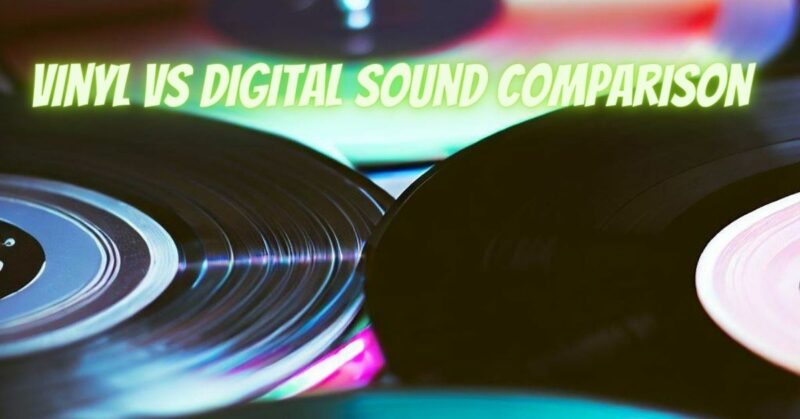The debate between vinyl and digital sound has been a longstanding topic among audiophiles and music enthusiasts. Both formats have their unique characteristics and proponents, leading to discussions about which one offers a superior listening experience. In this article, we will compare vinyl and digital sound, exploring the distinct qualities of each format and helping you understand the differences in their audio reproduction.
Vinyl Sound Experience
Vinyl records are an analog audio format that captures the original sound wave as physical grooves on the record’s surface. When played on a turntable, the needle (stylus) follows these grooves, producing an analog electrical signal that is then amplified to drive the speakers.
Pros of Vinyl Sound:
- Warm and Rich Sound: Vinyl records are often praised for their warm and rich sound quality. The analog nature of vinyl reproduction imparts a natural and organic feel to the music, especially in the midrange frequencies.
- Presence and Depth: Vinyl records can provide a sense of presence and depth, making the music feel more alive and immersive.
- Vinyl Artifacts: Some enthusiasts appreciate the subtle pops, clicks, and surface noise that are characteristic of vinyl records, as they add a sense of nostalgia and uniqueness to the listening experience.
Cons of Vinyl Sound:
- Vulnerability to Wear: Vinyl records are susceptible to wear and tear, which can affect the sound quality over time. Dust, scratches, and improper handling can lead to pops, crackles, and distortion.
- Limited Dynamic Range: Vinyl records have a limited dynamic range compared to digital formats, which can affect the ability to reproduce the full spectrum of loud and soft sounds in the music.
Digital Sound Experience
Digital audio is a representation of sound in a series of numerical values. It is typically encoded in formats such as MP3, FLAC, or WAV, and can be played through various devices like smartphones, computers, and dedicated digital audio players.
Pros of Digital Sound:
- Consistency: Digital audio provides consistent sound quality and remains unaffected by the wear and tear associated with physical media like vinyl records.
- Wide Dynamic Range: Digital formats can capture a wide dynamic range, allowing for accurate reproduction of both the softest and loudest passages in the music.
- Convenience and Portability: Digital music is easily accessible and can be carried on portable devices, offering convenience and portability for music lovers on the go.
Cons of Digital Sound:
- Lossy Compression: Some digital formats use lossy compression, which can result in a loss of audio quality, particularly in extreme bitrates.
- Lack of Warmth: Some audiophiles argue that digital sound lacks the warmth and naturalness of vinyl, with the potential for a more sterile and clinical sound.
The vinyl vs. digital sound comparison is not a clear-cut case of one format being definitively better than the other. Each format has its own unique characteristics, and the preference for one over the other largely depends on individual taste and listening priorities.
Vinyl records offer a warm and rich sound with a sense of nostalgia and physicality, while digital audio provides convenience, consistency, and a wider dynamic range. Some audiophiles prefer the analog charm of vinyl, while others value the convenience and portability of digital music.
Ultimately, the choice between vinyl and digital sound comes down to personal preference and how you prioritize the listening experience. Regardless of your choice, both formats can provide an enjoyable and immersive way to experience the music you love.


